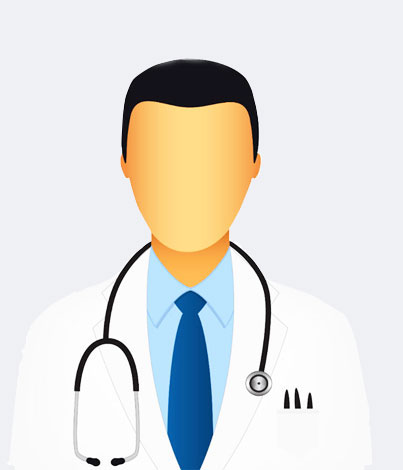Two-Phrase Orthodontic Treatment in Berwyn, IL
Phase 1 orthodontic treatment is usually recommended for children between the ages of 6 and 10. This treatment is also called interceptive orthodontic treatment. The purpose of phase 1 orthodontic treatment is to correct any developing dental issues before they become severe and harder to treat.
Some of the most common types of bite issues that require phase 1 orthodontic treatment include crossbite, crowding, and underbite. Phase 1 orthodontic treatment can also address teeth that are protruding or growing crookedly.
What does phase 1 treatment involve?
Phase 1 orthodontic treatment involves the use of a removable appliance, commonly referred to by orthodontists as a “headgear.” The headgear is used to correct the position of the jaw, guide the growth of the jaw, and establish adequate space for adult teeth to grow. The headgear is worn for 12 to 24 months, and it must be worn as instructed, or the treatment may fail.
The other major orthodontic therapies used in Phase 1 treatment
- Specialized retainers
- Headgear
- Limited phase of braces (selected teeth)
- Space maintainers
- Functional appliances
- Expansion appliances
What happens during phase 1 treatment?
The purpose of phase 1 orthodontic treatment is to make sure there is enough room in the mouth for the permanent teeth and permanent jaw. Most children will need phase 1 treatment, even if they do not have all their adult teeth. During this phase, a device called a palatal expander is used to expand the upper jaw and create more room for permanent teeth.
What are the benefits of phase 1 treatment?
- Minimizes time spent in braces
- Less expensive than phase 2 treatment
- More cosmetically appealing
What is a phase 2 orthodontic treatment?
Your orthodontist may recommend a phase 2 orthodontic treatment for patients who need a more comprehensive type of orthodontic treatment.
Phase 2 treatment is typically necessary when the teeth are misaligned, or there is too much space between a patient’s two dental arches. If left untreated, the patient can face serious oral health issues, including cavities, gum recession, and misaligned teeth.
A phase 2 treatment usually consists of placing metal braces or Invisalign aligners on a patient’s teeth to move them into the correct position. Sometimes, your orthodontist will recommend a palatal expander, which widens your upper jaw. This will help bring your two dental arches closer together.
The phase 2 orthodontic treatment aims at ensuring that your teen has healthy, aligned teeth for life. The treatment ensures that each tooth is in the correct position and the bite is properly aligned.
What are the benefits of phase 2 treatment?
- Straightens and aligns teeth
- Improves bite
- Reduces crowding
- Improves the appearance of teeth
- Improves self-esteem
What are the goals of two-phase orthodontic treatment?
There are a variety of reasons why patients may opt for two-phase orthodontic treatment. While each person’s dental condition is unique, there are some common motivating factors.
Some patients may have orthodontic issues that are so severe that they cannot be addressed with Invisalign treatment. For these patients, the traditional approach of two dental appliances to gradually move the teeth may be recommended.
Other patients may have orthodontic issues that are less severe and can be addressed with Invisalign treatment. For these patients, traditional treatment may be recommended to get the teeth into a better position before Invisalign treatment.
What happens after two-phase orthodontic treatment?
Patients should wear retainers both day and night to keep their teeth from shifting back into misalignment. Patients should continue to schedule regular dental checkups to ensure that their teeth continue to stay healthy.
Call 34th Street Dental Care at 708-484-6576 to schedule your consultation with our dentists to learn more about our dental treatments.
Braces
Opalescence Teeth whitening
Dental Exams & Cleanings
Implant Dentistry
Dental Veneers
Dental Crowns
Root Canal Therapy
Dental Bridges
Emergency Dental Care
Tooth-Colored Dental Fillings
Dental Implants
Dentures
General and Family Dentistry
Retainers
Surgical Periodontal Treatment
Non-Surgical Periodontal Treatment
Periodontics
Frenectomy
Crown Lengthening
Teen Orthodontics
Full-Mouth Restorations
Tooth Extractions
Gum Disease Treatment
Invisalign
Early Orthodontics
Adult Orthodontics
Orthodontics
Laser Dentistry
Digital Cephalometric X-Rays
Digital Panoramic X-Rays
Digital X-Rays
Cosmetic Dentistry
Sleep apnea treatments
Wisdom Teeth Removal
Restorative Dentistry
Dental Technology
Single-Tooth Dental Implants
Locator Overdentures
Office Hours
MON9:00 am - 7:00 pm
TUE9:00 am - 6:00 pm
WED8:00 am - 7:00 pm
THU9:00 am - 6:00 pm
FRI9:00 am - 5:00 pm
SAT8:00 am - 2:00 pm
SUNClosed
6411 34TH STREET,
Berwyn, IL
Phone : (708) 484-6576Text Us : (708) 484-6576

